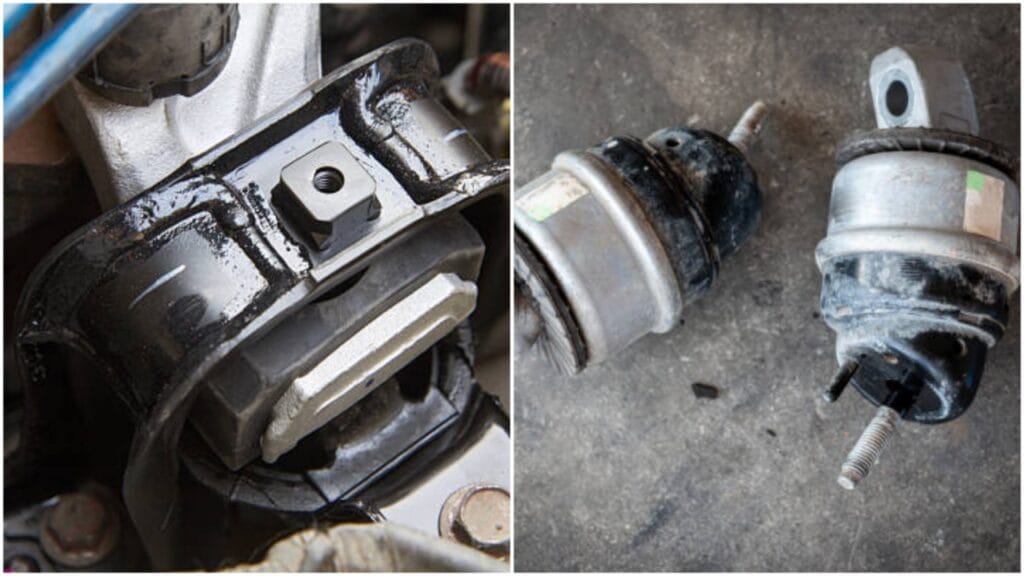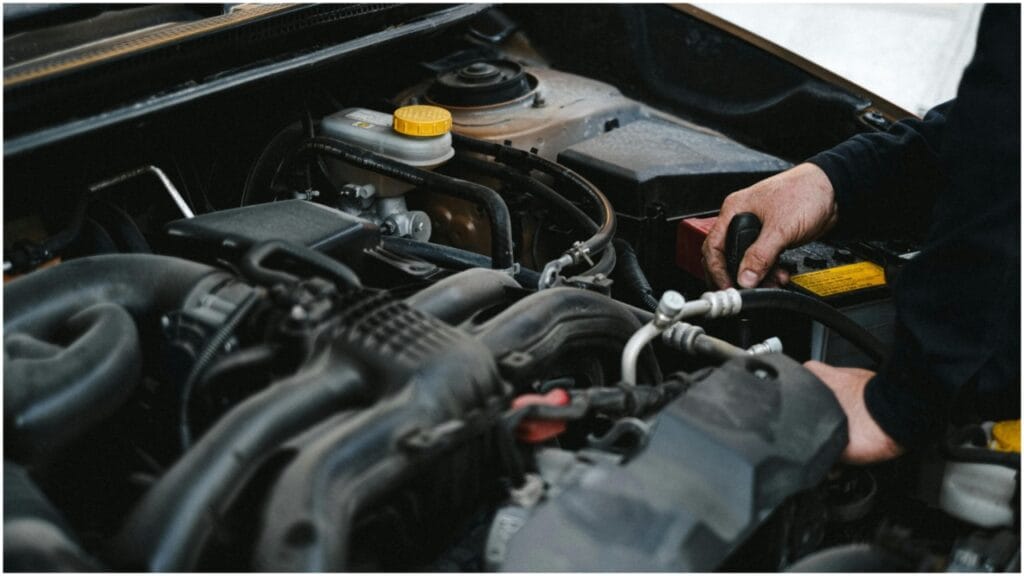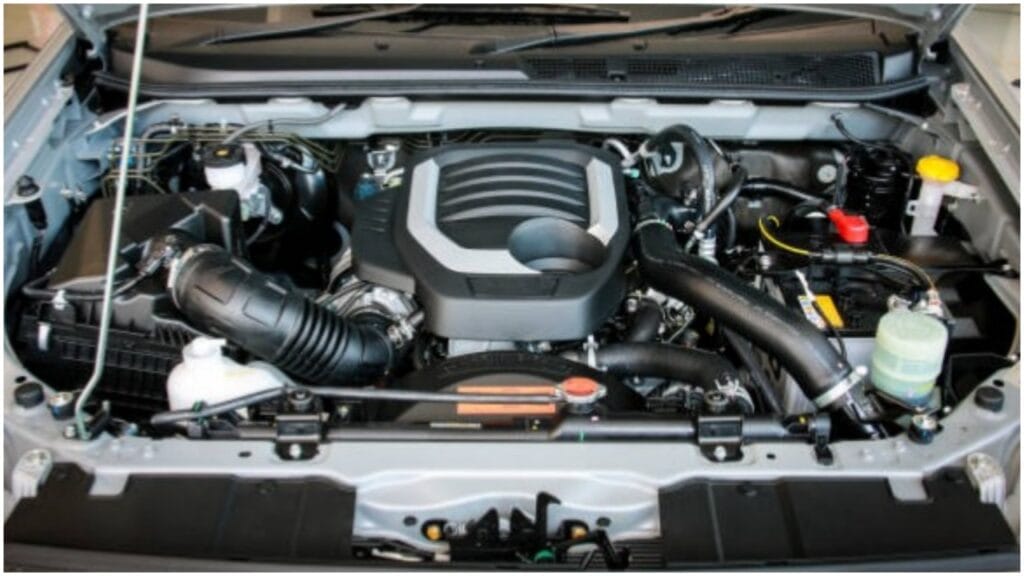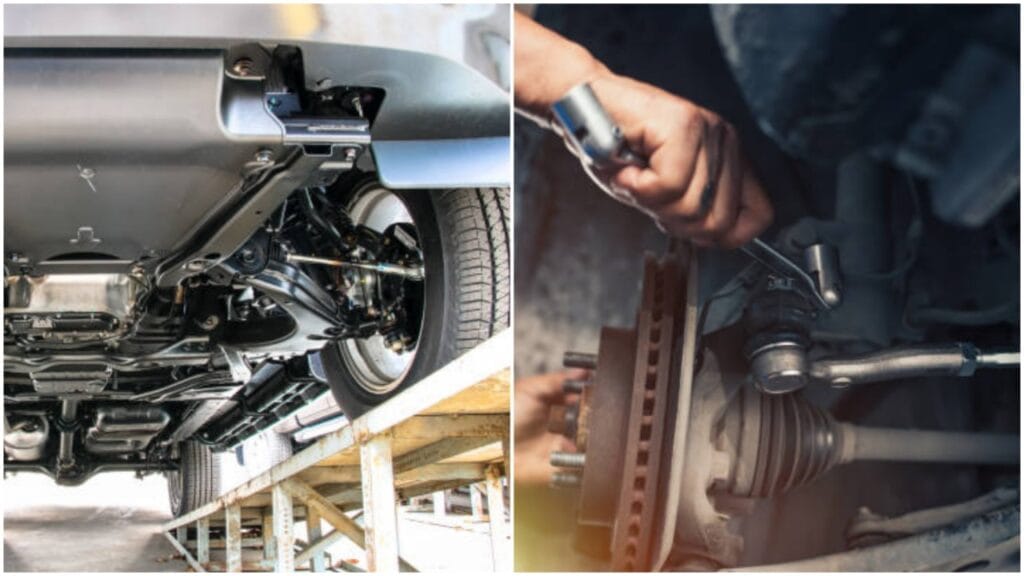It can feel alarming if your car jerks while you’re driving at a steady pace. This usually means something’s off with the engine or transmission. Often, it’s a sign that fuel or air isn’t flowing smoothly. The fuel injectors may be clogged, so gas isn’t getting to the engine in the right amounts.
Spark plugs can be worn out, causing the engine to misfire or struggle. Even a dirty air filter can make the engine choke, causing those jerks. Sometimes, a bad sensor gives your car’s computer the wrong info.
Or, your transmission fluid is low, making gear shifts rough even if you’re not accelerating. A quick check-up will reveal a simple fix or an early sign of a more significant issue. Below are the details for your understanding.
Why the Jerk?
When a car jerks at a constant speed, it’s like a red flag waving. Something must be in balance, out of sync, or downright broken.
It is fuel-related, a spark issue, or something more sinister lurking deep in the transmission.
Sometimes, they’re like living things with habits, moods, and occasional outbursts. A jerk usually means something’s up with the power delivery.
The engine, transmission, or fuel system cannot keep things smooth and steady. And while it starts as an occasional twitch, it can quickly escalate.
The Fuel Problem That Is Brewing

It must flow cleanly, consistently, and under just the correct pressure. But if something’s wrong, if there’s a hiccup in the delivery, your car will stutter, hesitate, and jerk.
Imagine a clogged fuel filter. It’s supposed to keep impurities out, but it gathers the gunk over time and starts choking the flow.
When that happens, the engine can’t get the steady stream of fuel it needs. A blocked or malfunctioning fuel injector does the same. And that jerk is the start of more significant fuel delivery problems.
Spark Plugs Misfiring: Whiplash
Now, let’s turn to those little spark plugs. They’re tiny, but their job is enormous. If even one of them starts misfiring, the combustion process in your engine gets thrown out of sync.
Misfiring spark plugs are common causes of jerky rides. They can make your engine behave like it’s on a caffeine overdose.
When spark plugs start misfiring, you look at unburned fuel passing through the exhaust system. That can wreck your catalytic converter.
So, if the jerk is tied to a misfire, you may have to pay for expensive repairs later.
The Transmission, the Silent Saboteur
The transmission is a powerhouse. It keeps the wheels turning at the right speed. It ensures the car keeps up with the engine.
But when it goes rogue, it’s not a quiet saboteur. You’ll feel it every time the car jerks.
A jerky transmission means slipping gears. It also indicates low or dirty fluid. If you’re driving a manual, it is even a bad clutch.
And that’s just scratching the surface. The worst-case scenario here is full-on transmission failure, and that’s not a bill anyone wants to see.
Engine Mounts: The Unsung Heroes

We don’t often think about engine mounts, those silent chunks of rubber and metal holding everything steady under the hood. But they’re critical for keeping the engine stable and the vibrations minimal.
Lousy engine mounts can cause severe jerking. This not only makes for a rough ride but can also strain other engine components.
Over time, this jerking action can knock things out of alignment, leading to even more damage.
So, if the mounts are the issue, replace them before they start a cascade of other problems.
Jerks Mean Wear and Tear on Other Parts
The thing about jerking is that it’s not just uncomfortable. It’s not just annoying. It isn’t good for your car’s health.
Parts wear down just a little bit more every time your car jerks. Each jolt stresses engine components, belts, and even the tires.
In a way, it’s like your car is constantly bracing itself for impact. Cars aren’t designed to endure rough treatment for long. Over time, that sudden shock can wear out even the most resilient parts.
Is It Dangerous? Yes, and Here’s Why
Jerking isn’t just uncomfortable—it’s dangerous. You don’t have complete control when a car jerks at a constant speed. That split-second jolt can throw you off balance.
This is especially true if you’re trying to navigate a curve. It also applies when avoiding obstacles or just holding steady in a lane.
It’s unpredictable, and it messes with your response time. In a worst-case scenario, it causes you to lose control. So, yeah, it’s dangerous. Please don’t ignore it.
Long-Term Damage

You think, “It’s just a little jerk. Nothing major.” But over time, the damage adds up. Think of it as a slow-motion wreck under the hood, one jerk at a time. Things gradually start to wear down and fall out of sync.
The longer you drive with this issue, the more you set yourself up for more extensive repairs.
Transmission problems, catalytic converter failure, worn-out mounts—the list goes on. So, take it seriously, even if it feels minor now.
What Can You Do?
So, what’s the solution? First, get a diagnostic check. Please take it to a professional because diagnosing a jerk is tricky.
It is any number of things, and a pro can pinpoint it without the trial-and-error headache.
They’ll check the filter, pump, and injectors if it’s the fuel system. If it’s the ignition, spark plugs are the first suspects.
And for transmission issues, buckle up because there are many problems. In the meantime, drive gently.
Avoid putting too much load on the engine. If you’re comfortable, you can try minor fixes—like cleaning out fuel injectors or replacing spark plugs—on your own. But be cautious.
The Bottom Line
Car jerking isn’t just a rough ride. It’s a warning. It’s your car’s way of saying something’s wrong, and you’re playing with fire if you ignore it.
That small jolt at a steady speed is the beginning of a costly repair—or worse.
If your car’s acting up, listen. Pay attention to the jerk. It can save you from a hefty repair bill or even a dangerous situation.
A Sign of Something Deeper

When a car jerks while trying to drive smoothly, it’s more than an irritating quirk. It’s a sign that something isn’t functioning correctly.
It is something simple or an underlying issue that’s about to surface. But here’s the thing: that jerk isn’t random.
It’s your car warning you before something bigger breaks down.
A Domino Effect
One malfunctioning part rarely stays isolated. In a car, issues have a way of spreading. When one part fails or starts to misfire, others often get dragged into the problem. A jerking vehicle is more than a temporary discomfort.
It can lead to a series of damages from the engine to the exhaust and beyond. Ignoring a jerk is like letting a crack in the wall go unchecked. It only gets worse with time.
The Strain of Every Jerk
Every time your car jerks, parts in the engine are forced to work harder. The sudden shift causes belts to strain, components to misalign, and small pieces to wear faster.
That little jolt? It’s not just a momentary shake. It’s a full-body strain on the car’s system that speeds up wear and tear.
Your Car’s Fuel Appetite
A jerking car often indicates a fuel problem, affecting efficiency. When your vehicle isn’t getting the fuel it needs, it works harder to keep moving.
This extra effort burns more gas, costing you more money at the pump. Ignoring the fuel issue can cause engine damage. This damage is far more expensive than a few extra gallons of gas.
What Lies Beneath the Hood

The jerk can feel like it’s just something you can shrug off. But under the hood, it’s a different story.
Parts move in sync, relying on the next to work smoothly. A sudden jerk throws this balance off, putting parts at risk of collision, excessive friction, and failure.
Noisy Jerks are a Clue
A car that jerks often makes a sound when it does. You should pay attention to this sound. A metallic clang, a thump, or a subtle click can indicate the problem.
If you listen closely, these sounds can give away the type of issue. It is a transmission issue, a fuel problem, or an ignition misfire.
The Transmission’s Secret Language
The transmission is one of the most complex parts of your car. It has its way of signaling when something’s wrong.
A jerky transmission is trying to tell you it’s slipping or fluid levels are low. It even means that gears aren’t engaging properly.
Ignoring this signal risks more serious transmission damage that can become a nightmare to repair.
That Jerk Cost You Control
A sudden jerk doesn’t just jolt the car—it jolts you, too. This can be dangerous in the wrong conditions. You could lose control if the vehicle jerks on a curve or at high speed.
This is especially true if road conditions could be better. That momentary loss of control can lead to an accident.
Extra Stress on Suspension and Tires

Every jerk sends a shockwave through the suspension and tires, parts that are crucial to your car’s balance and traction.
The more jerks, the more wear these parts endure. Over time, this can cause your suspension to weaken, your tires to wear unevenly, and your alignment to go off-kilter.
That rough ride you feel now is only a preview of more significant issues with your suspension.
Fixing It Saves You Money
It can be tempting to ignore the problem, especially if it only happens occasionally. But minor issues are the easiest to fix.
Waiting until the car jerks constantly is not a good idea. Delaying repairs until other parts fail only makes them more complicated and expensive.
Fixing the root of the problem early can save you money. In the long run, you avoid spending far more on parts, labor, and towing.
Driving with Peace of Mind
A car that jerks keeps you on edge, constantly wondering when the next jolt will come. It makes driving less enjoyable.
Fixing the issue means restoring the smooth, predictable performance that makes driving fun again.
FAQ’s
When your car jerks while driving?
A jerking car is often a sign of trouble that needs attention. It can happen for many reasons. The most common is a problem with the fuel system.
A clogged fuel filter or a failing fuel pump can disrupt the flow of fuel to the engine. This causes the car to jerk as it struggles for power.
Dirty or worn-out spark plugs are another culprit. If they can’t ignite the fuel properly, the engine misfires, leading to jerky movements. Faulty ignition coils or issues with the wiring can add to the problem.
A transmission issue might also be to blame. If the gears don’t shift smoothly, it creates a jerking sensation. Low transmission fluid or a worn-out clutch in manual cars are common causes.
Even dirty air filters can affect performance. They limit airflow, causing the engine to run unevenly. Sensors, like the mass airflow or oxygen sensor, can also fail, sending wrong signals to the engine.
Car jumping while driving?
One common cause is a problem with the fuel system. If the fuel pump isn’t delivering the right amount of fuel, the engine may stutter or hesitate. Dirty fuel injectors can also disrupt the smooth flow of fuel.
Another reason might be ignition issues. Worn-out spark plugs or failing ignition coils can cause misfires, leading to that jerking sensation. A clogged air filter can choke the engine, disrupting its rhythm.
Transmission troubles are another culprit. A slipping or worn-out transmission can make the car lurch unexpectedly.
Even something as simple as lousy fuel or low-quality gas can cause your car to behave this way. It’s also worth checking the sensors.
Faulty oxygen or mass airflow sensors can send the wrong signals, causing the engine to act up.
Car jerks when accelerating at low speeds manual?
Car jerking during low-speed acceleration in a manual transmission can be a hassle. This problem usually points to something minor but crucial.
Often, it’s a sign of fuel delivery or ignition issues. If the engine isn’t getting fuel smoothly, it struggles, and you’ll feel it in jerks.
Dirty fuel injectors can impede flow, and a clogged fuel filter can cause hesitation when you try to accelerate.
On the other hand, your spark plugs are the real culprits. Worn plugs or a weak ignition coil can create inconsistent sparks, making the engine stumble.
The timing of clutch release and throttle also plays a part. A sticky throttle body or a rough air-fuel mix is also causing it, creating a chain of minor misfires.
Routine maintenance is the best way to avoid this. Clean the throttle body, replace filters, and check plugs regularly. It’s all about smoothness and consistency.
Minor fixes keep your drive steady and enjoyable, with no jolts to interrupt the flow.
Why does my car stutter in reverse?
Usually, it points to an issue with the engine or transmission. If your car hesitates or feels rough when backing up, it struggles to get the right air-fuel mix.
Dirty fuel injectors or a clogged air filter can cause this. They need to work on the flow, which leads to hesitation.
In automatic cars, low transmission fluid or a worn-out torque converter can cause the reverse to feel rough or shaky.
A worn clutch slips when you reverse, causing a stutter for manual transmissions. Even engine mounts can play a role.
If they’re loose or worn, you’ll feel vibrations more intensely. This is especially true in reverse when torque shifts differently.
Sometimes, it’s just a simple matter of checking and topping off fluids, cleaning filters, or adjusting idle speed.
Regular maintenance often solves the issue before it becomes a bigger problem.
Why does my car jerk on low gear?
When your car jerks in low gear, it’s often a sign that something’s wrong with the engine or transmission. In low gear, your vehicle needs steady power and smooth transitions.
But if fuel isn’t flowing correctly, you’ll feel it as a jerk. You’ll notice a lurch if spark plugs aren’t firing just right. Dirty fuel injectors or a clogged air filter can cause these hiccups.
They disrupt the smooth flow of fuel and air that the engine needs. Essential maintenance can make a big difference. Checking filters, spark plugs, and fluid levels can help prevent these jolts.
If you care for your car well, it is less to jerk. This keeps your drives smooth and predictable, especially in those low gears.
Why does my car jerk when I put it in drive or reverse?
Your car will jerk as you put it in drive or reverse. It usually hints at an issue with the transmission or engine mounts. This movement needs to be smooth.
Still, worn or loose engine mounts can make the car feel jumpy. They struggle to absorb the power shift. Transmission problems are another common cause, especially in automatic vehicles.
If the transmission fluid is low, dirty, or old, it can’t properly lubricate the parts. This can lead to harsh or jerky shifts.
A worn clutch or flywheel can also create a rough transition when switching between drive and reverse for manual transmissions.
Another factor is a malfunctioning idle air control valve regulating the engine’s idle speed. If it’s not working correctly, the car can jolt as it tries to stabilize the idle when you shift gears.
Regular maintenance—like checking transmission fluid, inspecting engine mounts, and servicing the clutch—can help avoid these jolts.
With these parts in good shape, your car will shift smoothly, whether moving ahead or backing up.
Conclusion
When your car jerks at a steady speed, it’s a sign that something’s wrong—and not just for comfort’s sake. The jolt seems small.
Yet, it places strain on various components. These include the engine, transmission, suspension, and even tires.
Ignoring this problem can turn manageable issues into costly, complex repairs and compromise your control while driving. Solve the root cause early.
You can prevent a domino effect of damage. You avoid unnecessary expenses. Keep driving stress-free.
A smooth ride is more than enjoyment; it’s about safety, peace of mind, and preserving your car’s health.

